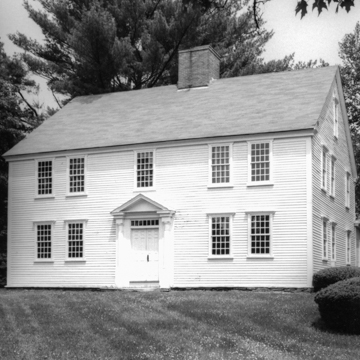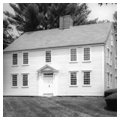Jonathan Hunt settled in Vernon with his father in 1767. Jonathan's grandfather Jonathan Hunt of Deerfield, Massachusetts, had partnered with Thomas Pynchon in earlier efforts to settle in Vernon. Hunt rose to prominence during the Land Grants Controversy and then in the Republic of Vermont as lieutenant governor. The house he built is an indication of his stature, his Connecticut River Valley roots, and the rapid maturation of building arts in the southeast corner of the state. The house conforms to the substantial two-story, gabled, center-chimney form of eighteenth-century New England and has the broad, paneled double door and transom for which the valley is known. It also has the rarely seen hand-turned engaged flanking columns that once probably supported an elaborate pediment and now a simple triangular pediment. The interior has fine paneled walls and wainscoting in the parlors and a central-porch stairway. The house is open to the public as the visitors' center for the nearby Vermont Yankee, the state's only late-twentieth-century nuclear power plant.
You are here
Hunt House
If SAH Archipedia has been useful to you, please consider supporting it.
SAH Archipedia tells the story of the United States through its buildings, landscapes, and cities. This freely available resource empowers the public with authoritative knowledge that deepens their understanding and appreciation of the built environment. But the Society of Architectural Historians, which created SAH Archipedia with University of Virginia Press, needs your support to maintain the high-caliber research, writing, photography, cartography, editing, design, and programming that make SAH Archipedia a trusted online resource available to all who value the history of place, heritage tourism, and learning.


















